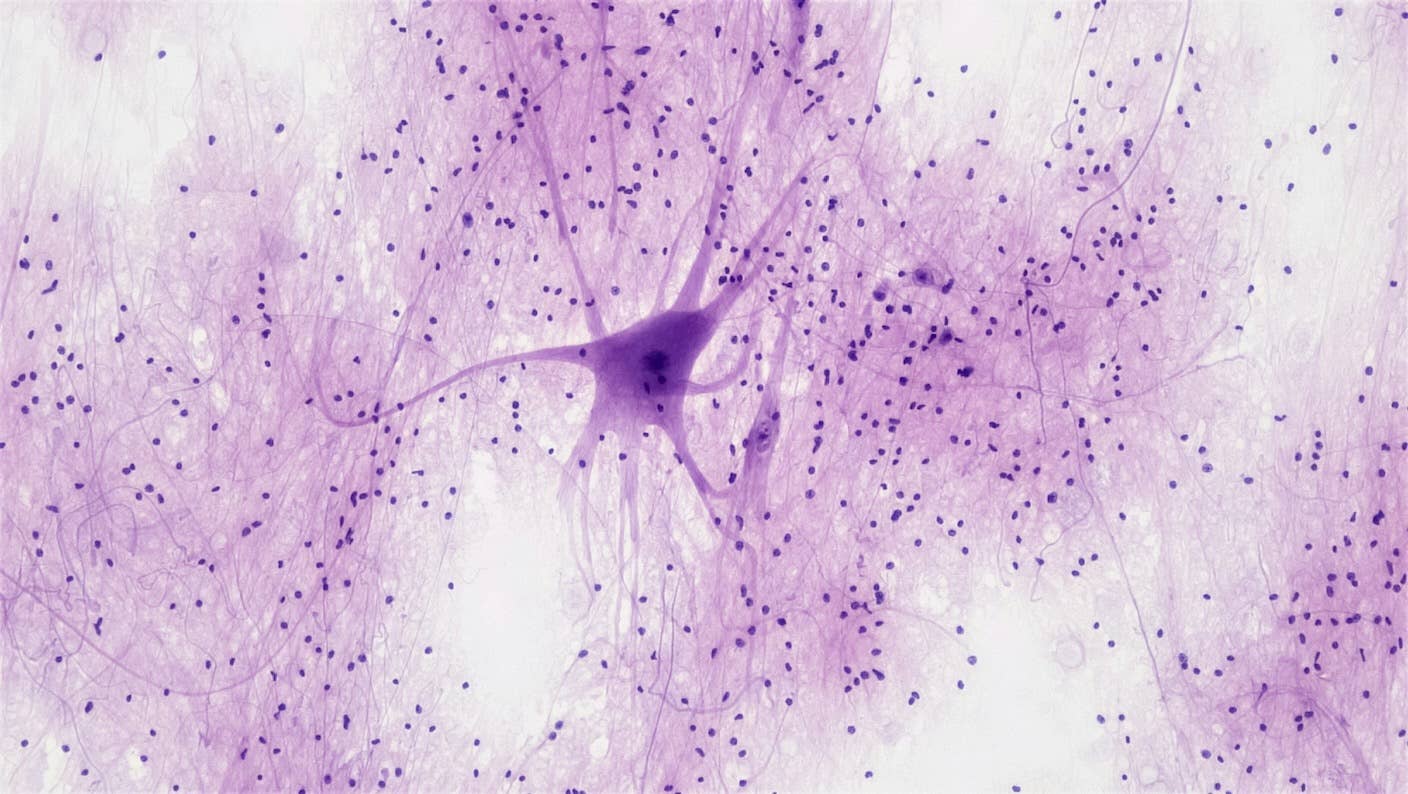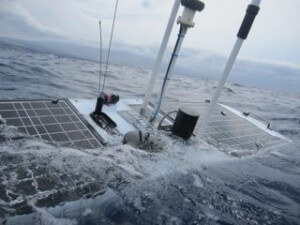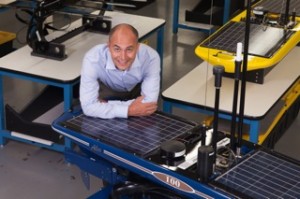Liquid Robotics Aims to Usher in Era of Smart Oceans With Autonomous Robots

Share
When Liquid Robotics’ Ed Lu dreams, he sees thousands of his firm’s Wave Gliders blanketing the sea—a smart grid for the ocean. It may yet be a dream, but Lu’s vision isn’t terribly far fetched. The firm’s Wave Glider robots have logged 100,000 miles, braved 20 foot seas, and faced gale force winds. One of its gliders, G2, survived and transmitted data 60 miles from the eye of Hurricane Isaac. Proof of concept? Check. The next challenge for Liquid Robotics is convincing their target market to give the tech a try. But beyond scientists, just who exactly is their market?
That’s what Lu, chief of innovative applications at Liquid Robotics, is trying to figure out. See him pitch the Wave Glider at this recent TEDx talk:
You may remember how the Wave Glider works from our first Liquid Robotics article, but here’s a refresher. On the surface, it’s a surfboard (the float) about seven feet long and loaded with solar panels and a customizable sensor array. Below the surface, the glider converts wave motion into forward thrust to tow the float—no fuel, no fuss.
Lu is no stranger to tough problems and innovative solutions. He’s an electrical engineer, astrophysicist, and ex-astronaut. Now at Liquid Robotics, he sees a wide assortment of applications—commercial, government, and research.
Continuous, real-time ocean data would make ocean commerce safer. Nations could better guard exclusive economic zones. The craft could gather intelligence data for defense purposes—it has no radar cross-section and makes no noise.
The best argument in favor of the tech is its combination of mobility and low cost.
We already have ocean sensors, but they’re expensive. Ships cost $10,000 to $100,000 a day to operate. Moored deep water buoys are cheaper but still run $200,000 to $1 million a year. Clients can buy a Wave Glider outright for $200,000 or lease glider time at $1,000 to $3,000 a day.
The glider is more mobile than a buoy and can stay out longer than a ship (in any weather) for a fraction of the cost.
At the moment, 50% of Liquid Robotics clients lease data, so many of the gliders are piloted from the firm’s headquarters in Sunnyvale. “All [clients] have to do is define their business problem, and we provide them with the data they need.”
The last few years have been a flurry of financing, engineering, testing, and publicity—including recent articles in the New York Times, Wired, The Wall Street Journal, and Forbes.
In 2011, the firm received $22 million in venture financing from VantagePoint Capital partners. Later in the year, they embarked on a 300 day, 2.25 million data point, cross Pacific journey. The gliders made it from California to Hawaii intact and have since embarked on the second leg of their trip, two to Japan and two to Australia.
In all, Liquid Robotics “has deployed more than 100 of the robots around the world on missions for climate scientists, the oil industry, and the US military.” But now their tech is proven, they are looking to expand that number dramatically.
In June, the firm signed onto a joint venture, Liquid Robotics Oil & Gas, with energy giant Schlumberger. The gliders will be used for seismic monitoring, measuring currents for rig building, and detecting oil seepage from drilling. The new venture should significantly raise the number of operational units in the field.
Be Part of the Future
Sign up to receive top stories about groundbreaking technologies and visionary thinkers from SingularityHub.


In August, the firm started Liquid Robotics Federal—a wholly owned subsidiary led by Beltway veteran Grant Palmer—to pursue federal defense contracts in need of “cost-effective solutions to persistent surveillance, monitoring, and communications on the seas and coastlines.”
Researchers are warming up to the technology too. NOAA is testing a Wave Glider named Alex in the ocean north of Puerto Rico this fall, hoping to gather crucial hurricane data to improve forecasting. Meanwhile, the Ocean Tracking Network is using gliders to track fish—a difficult task. Unlike aquatic animals that breathe, fish don’t surface often (maybe never) to ping tracking satellites.
All told, prospects look good for these autonomous ocean going robots. But how Alex does in hurricane season will be a key test in the harshest conditions. Glider G2 performed well in a Category 1 hurricane. What about in rougher weather? Will the tether hold? Might the system get flipped and tangled in the milieu?
Also, they’re not deal breakers, but the gliders do have some weaknesses.
Wildlife encounters are likely to increase as they get more machines in the water—a shark already damaged one glider. Further, they aren’t the most powerful vehicles. The top speed is just two knots. “If there’s a hellish current coming, we could be cutting through the water rapidly, but going backwards.”
There may also be a latitudinal limit to the technology. Operating in the Arctic Circle could sap the batteries during long cloudy stretches—without power, there’s no way to steer. And being constrained to forward motion could prove troublesome in icy seas.
That said, Liquid Robotics isn’t standing still. The next generation of gliders are already under development at the firm’s Kona laboratories.
Roger Hine notes they are focusing on “knots, watts, and carrying capacity.” Clients may currently choose from 65 sensors, but the lab is testing 152 more. CEO Bill Vass says, “We’re working on putting a mass spectrometer on it” and “a full genetics lab that will suck in salt water and count the microbes and break d0wn their DNA in real time.” Ambitious!
Whatever the ultimate configuration, the technology is proving viable and useful.
Maybe one day in the not-too-distant future Ed Lu’s dream will come true. He says, “You manage what you measure. Well, if you don’t know what’s going on out in the oceans, how can you manage it?”
A smart grid is great, but we might soon have a smart ocean.
Jason is editorial director at SingularityHub. He researched and wrote about finance and economics before moving on to science and technology. He's curious about pretty much everything, but especially loves learning about and sharing big ideas and advances in artificial intelligence, computing, robotics, biotech, neuroscience, and space.
Related Articles

In Wild Experiment, Surgeon Uses Robot to Remove Blood Clot in Brain 4,000 Miles Away

A Squishy New Robotic ‘Eye’ Automatically Focuses Like Our Own

This Crawling Robot Is Made With Living Brain and Muscle Cells
What we’re reading




